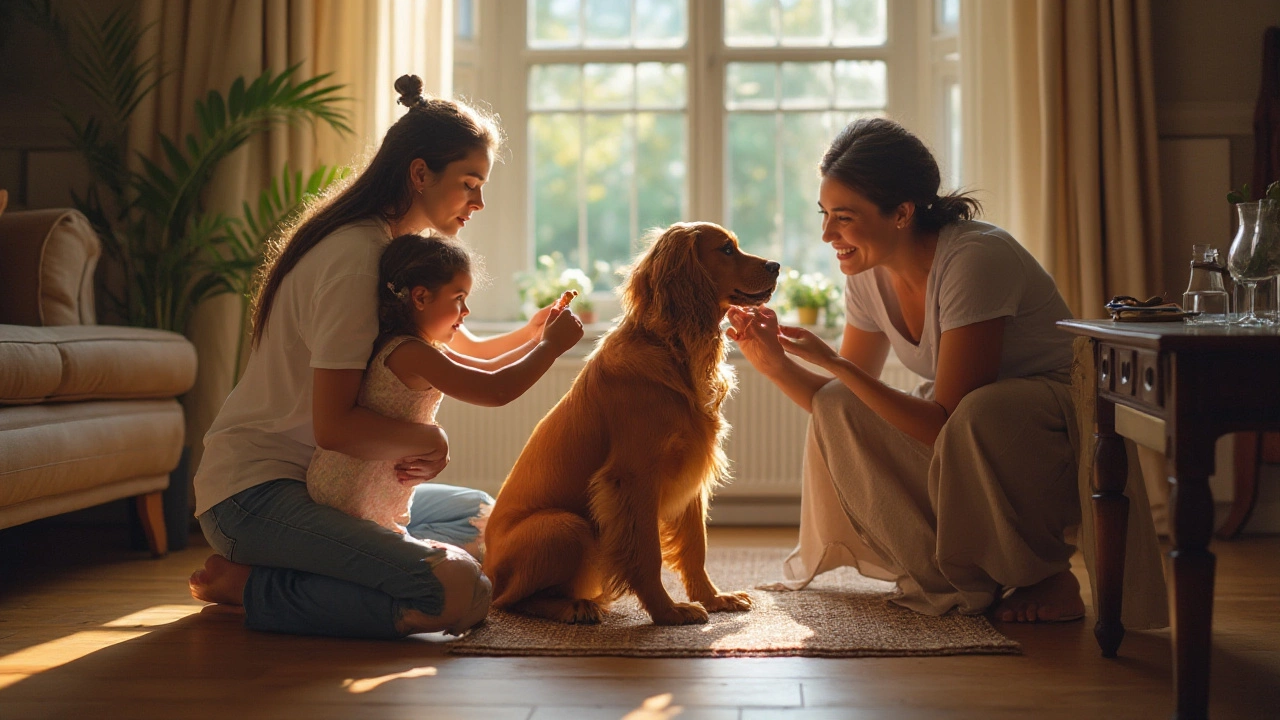Grooming Time: Simple Tips to Keep Your Dog Clean, Healthy, and Happy
When was the last time you gave your dog a proper grooming session? If you’re not sure, you’re not alone – most owners juggle work, walks, and playtime, and grooming can slip down the list. The good news? A quick routine doesn’t have to be a chore, and the payoff is a happier, healthier pup.
Why a Regular Grooming Schedule Matters
Regular grooming does more than keep the coat shiny. It helps you spot skin problems early, prevents matting that can cause pain, and reduces shedding around the house. For gundogs, a tidy coat also means better performance in the field – less drag, better temperature regulation, and fewer parasites hiding in thick fur.
Most UK vets recommend a basic grooming session every 4–6 weeks for medium‑to‑large breeds, and every 6–8 weeks for smaller dogs. Adjust the timeline if your dog spends a lot of time outdoors, rolls in mud, or has a double coat that needs extra attention.
Step‑by‑Step At‑Home Grooming Guide
1. Brushing – Start with a slicker brush for short hair or a under‑coat rake for thick coats. Work in short sections, following the direction of hair growth. A quick 5‑minute brush before a walk removes loose fur and prevents matting.
2. Bathing – Use a dog‑specific shampoo that matches your pup’s skin type. Lukewarm water is best; avoid getting water in the ears. A thorough rinse prevents irritation, and a quick towel dry followed by a low‑heat blow dryer (if your dog tolerates it) keeps the coat fluffy.
3. Nail Trimming – Trim just the tip of each nail, staying clear of the quick (the pink line inside the nail). If you hear a snap, you’ve gone too far – don’t worry, it happens. A nail grinder can be a gentler option for nervous pups.
4. Ear Care – Check for wax buildup or debris. Wipe the outer ear with a damp cotton ball; never insert anything deep into the canal.
5. Teeth Cleaning – A dog toothbrush and a pea‑size amount of canine toothpaste helps fight plaque. Even a quick once‑a‑week rub makes a difference.
Make the grooming routine a bonding time. Talk to your dog, give treats, and keep the pace relaxed. If your dog gets anxious, break the session into short bursts and reward calm behavior.
When you’re busy or your dog needs a professional touch – like a fancy clip for a show or a de‑shedding treatment – look for a local groomer who knows gundog needs. In the UK, many groomers offer a “field‑ready” package that includes a thorough brush‑out, ear cleaning, and a short trim to keep the coat functional.
Don’t forget seasonal adjustments. In winter, a heavier coat may need a deeper brush to prevent ice buildup, while summer calls for a lighter trim to keep your dog cool. Always check the weather forecast before a long walk; a wet coat can chill your dog faster than you think.
Finally, keep a grooming checklist in your phone or on the fridge. A simple list – brush, bathe, trim nails, clean ears, check teeth – ensures you never miss a step. Over time, the routine becomes second nature, and both you and your dog will look forward to grooming time.
Remember, a well‑groomed dog isn’t just about looks; it’s a sign of good health and a stronger bond between you. So grab that brush, fire up the tub, and enjoy the process – your dog will thank you with a wagging tail and a glossy coat.
- Morgan Ainsworth
- 0 Comments
Dog Grooming: Understanding the Time It Takes to Pamper Your Pet
Grooming your dog is not just about making them look good; it's a vital part of their health and well-being. The time required for grooming depends on various factors including the dog's breed, coat type, and behavior. With the right knowledge and equipment, you can ensure a smooth and stress-free grooming experience for both you and your pet. Learn how to gauge the time needed and discover tips to make the process efficient and enjoyable.
View More
